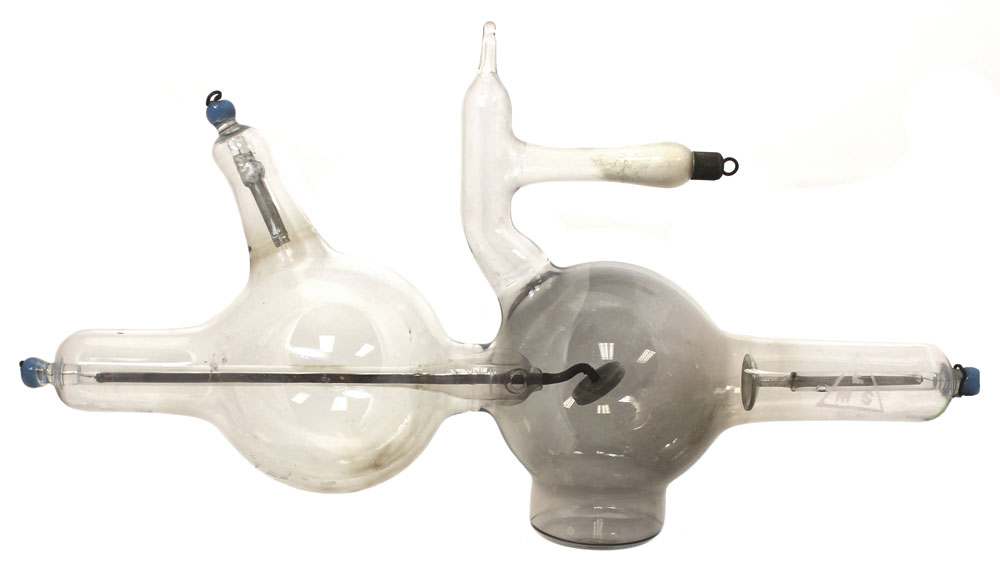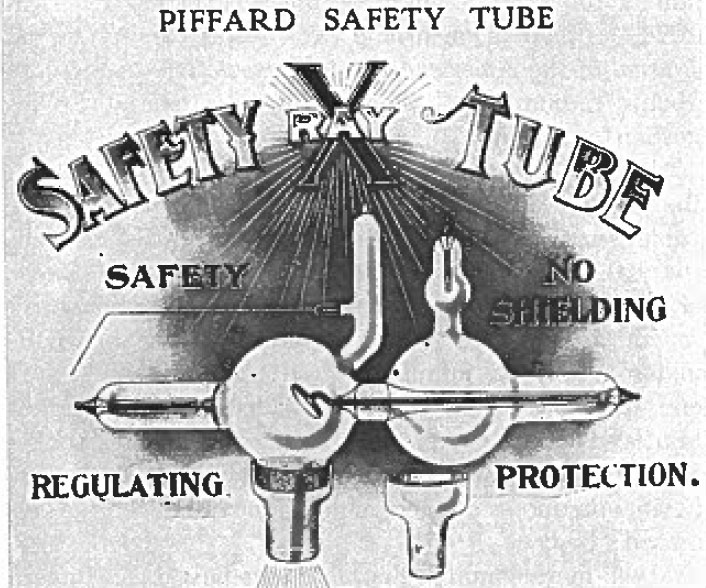Piffard Safety X-Ray Tube with Light Anode (ca. 1910)

This bi-anode x-ray tube is very similar to the other Piffard tube in the collection. The one difference is that this tube has a "light anode" whereas the other tube has a "heavy anode."
By definition, a bi-anode tube has three electrodes: a cathode, an anode and an anticathode.
The aluminum cathode is inside the glass arm near the point where the arm attaches to the right side of the spherical glass bulb (the bulb on the right). The letters "M E S," inside a triangle, are etched on the arm—they could only refer to E. Machlett & Son of New York city.
The anode is the aluminum rod enclosed by the glass arm attached to the upper left side of the bulb on the left.
The third electrode, the anticathode, runs along the long axis from the tube’s left end (in the photo) through the first bulb and into the second where it terminates. The platinum target at the free end of the anticathode is known as a “light anode” because of its low mass.
The glass appendage projecting from the top of the bulb on the right is the regulator. Its purpose was to help raise the pressure of the gas inside the tube if it became too low. For a detailed explanation of how it worked, check out the Introduction to Gas Discharge X-ray Tubes.

It is likely that the tube originally came with two interchangeable leaded glass cups (now missing) that would fit over the tube's extension and collimate the X-ray beam to the desired diameter. The use of these cups (see the advertisement to the right) was the brainchild of Robert Machlett (ca. 1904), although the tube's inventor, Henry Piffard, initially objected to their use.
Size: Approximately 14" long with 3 1/2" bulb diameter
References
- Grigg, E. R. N. The Trail of the Invisible Light. Charles C Thomas. 1965.
- Tousey, S. Medical Electricity, Rontgen Rays and Radium. W. B. Saunders Co. 1916.
